In today’s fast-paced urban lifestyle, where green space is a luxury, rooftop gardening has emerged as a refreshing and sustainable solution. It not only brings you closer to nature but also improves air quality, reduces heat, and creates a peaceful retreat right above your home. However, starting a rooftop garden requires thoughtful planning and execution. Whether you’re a novice or a seasoned gardener, this ultimate rooftop gardening checklist will guide you step-by-step to ensure a thriving and hassle-free rooftop garden.
1. Assess Rooftop Feasibility

Before diving into soil and seeds, evaluate whether your rooftop can actually support a garden.
Checklist:
- Structural Stability: Get an engineer’s evaluation to ensure your roof can handle the weight of soil, pots, water, and plants.
- Load-Bearing Capacity: Typical garden setups add substantial weight—ensure at least 100–150 kg/m² capacity.
- Waterproofing: Apply or upgrade waterproof membranes to prevent leakage into the building.
- Drainage System: Check for adequate slope and water outlets to avoid stagnant water during rainfall or overwatering.
2. Evaluate Sunlight and Wind Exposure
Plants thrive when they receive appropriate sunlight and airflow, but rooftop conditions can be extreme.
Checklist:
- Sunlight Hours: Track how many hours of sunlight your roof gets—6–8 hours is ideal for most vegetables and flowers.
- Shade Areas: Identify shaded zones for plants that need partial sunlight.
- Wind Barriers: Install windbreaks (bamboo fences, trellises, or green walls) to protect plants from strong gusts.
3. Plan the Layout
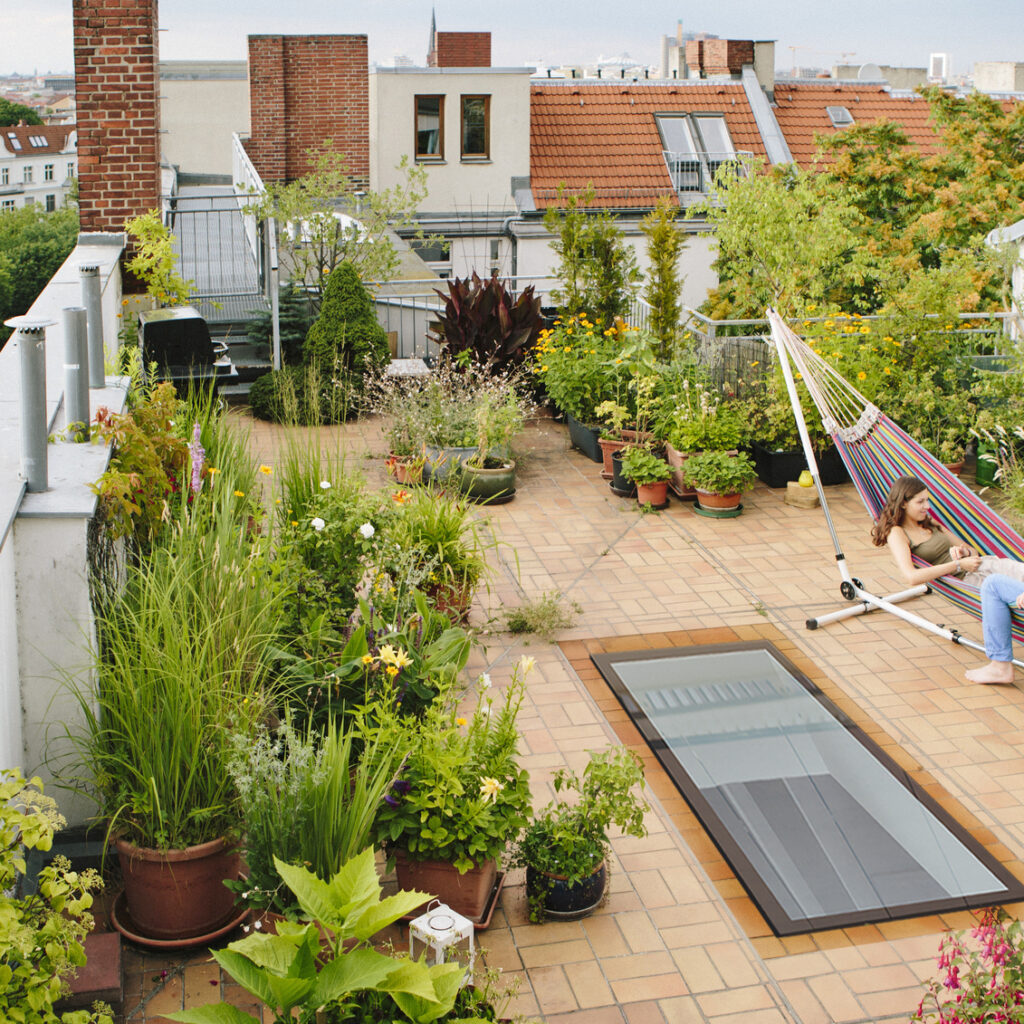
Proper layout helps optimize space, sunlight access, and visual appeal.
Checklist:
- Design Zones: Allocate areas for edible plants, flowering beds, vertical gardens, seating, and water features.
- Accessibility: Keep pathways clear for movement and maintenance.
- Container Placement: Place larger pots closer to the center and lighter or hanging ones at the edges.
- Vertical Spaces: Use trellises, hanging baskets, or wall-mounted planters to maximize vertical areas.
4. Choose the Right Containers and Beds
Choosing the appropriate planting containers ensures healthy root development and ease of maintenance.
Checklist:
- Material: Use terracotta, recycled plastic, grow bags, or wooden planters with proper drainage holes.
- Raised Beds: Install raised beds (preferably 12–18 inches deep) for herbs and vegetables.
- Self-Watering Planters: Consider these for ease during hot seasons or when you’re traveling.
- Wheels or Stands: Attach rollers for mobility or use elevated stands to prevent heat transfer from the concrete.
5. Soil Preparation and Mix
Rooftop gardens require lightweight, nutrient-rich soil to reduce stress on the structure and support plant growth.
Checklist:
- Soil Mix: Use a mix of:
- 40% garden soil
- 30% organic compost/vermicompost
- 20% coco peat for water retention
- 10% sand or perlite for drainage
- Sterilization: Sun-dry or treat the soil to kill pests and weed seeds.
- pH Check: Ensure the soil pH is neutral to slightly acidic (6–7) depending on your plant choice.
6. Plan the Watering System
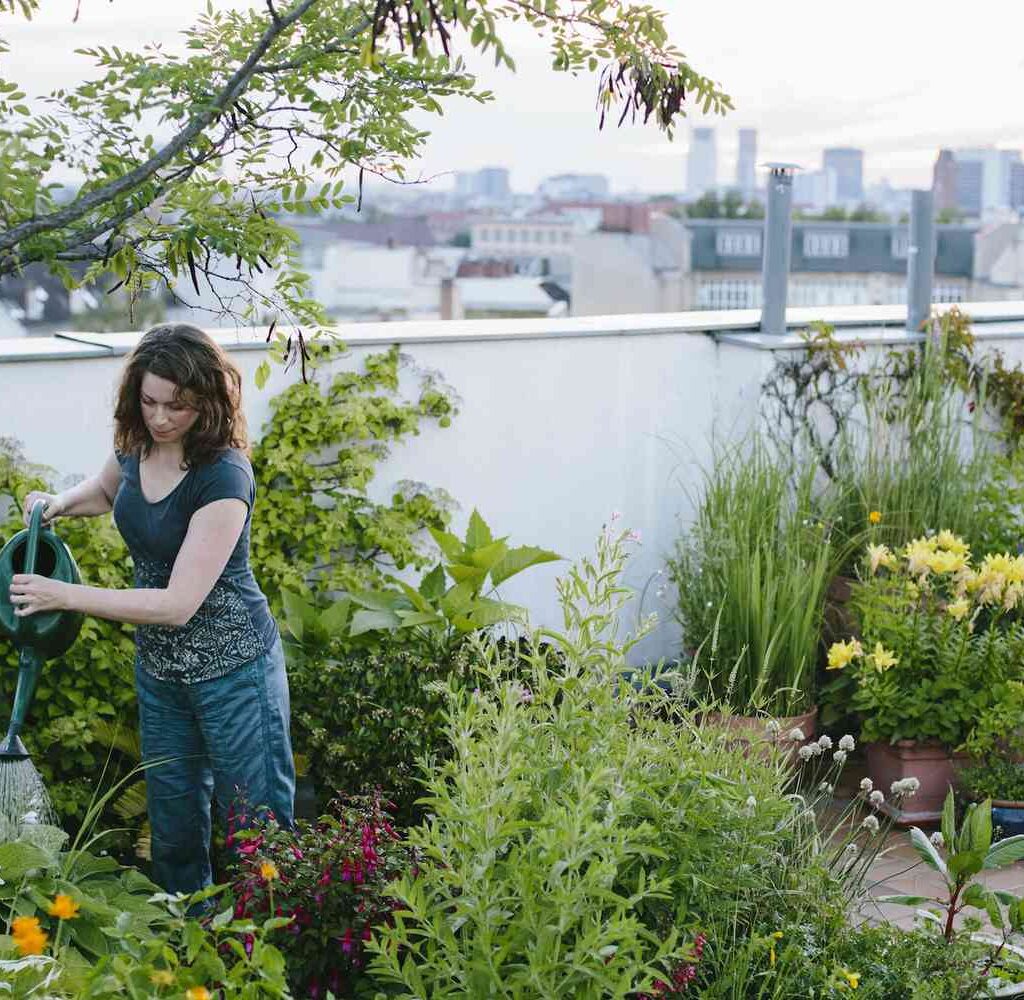
Watering efficiency is key in a rooftop garden due to quick evaporation and water runoff.
Checklist:
- Drip Irrigation: Install an automated drip system to ensure even watering and save water.
- Rainwater Harvesting: Set up a collection system with a filtration unit to reuse rainwater.
- Water Storage: Keep a barrel or tank on the rooftop for easy access.
- Mulching: Apply dry leaves, hay, or bark chips on top of soil to retain moisture.
7. Select Suitable Plants
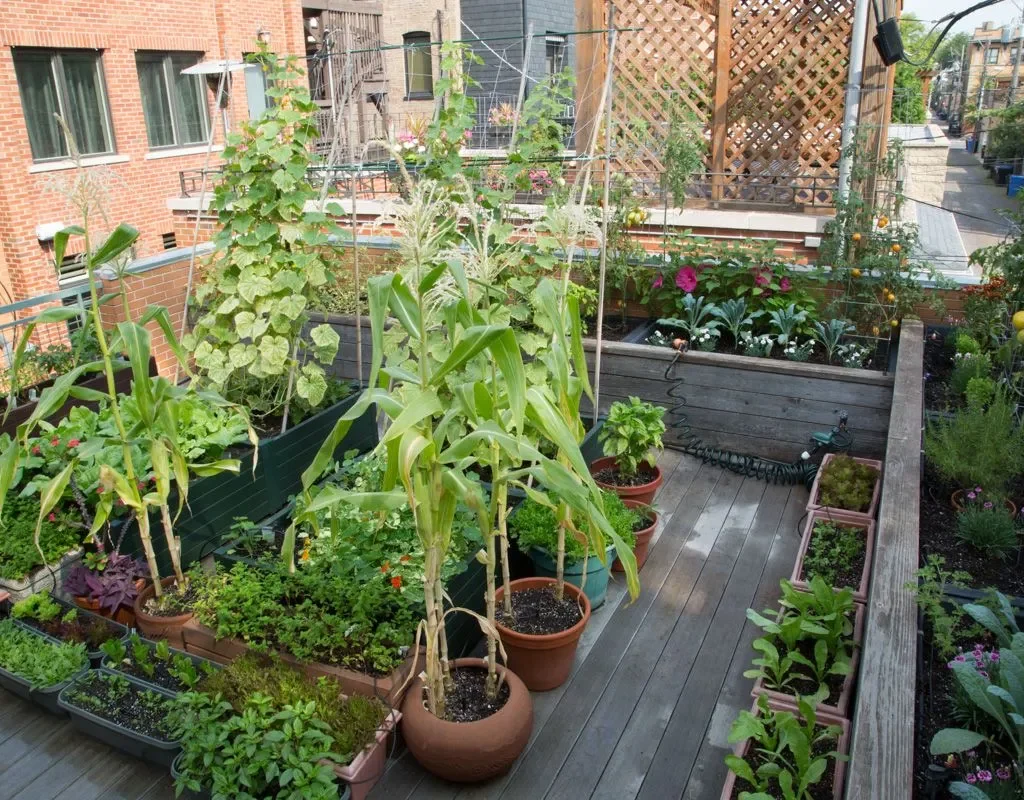
Choose plants based on your climate, available sunlight, and gardening goals.
Checklist:
- Vegetables: Tomatoes, spinach, radish, beans, eggplant, chilies, okra.
- Herbs: Mint, coriander, basil, oregano, rosemary, lemongrass.
- Fruits: Strawberries, lemons, papaya, figs, pomegranate in large containers.
- Flowers: Marigold, petunia, bougainvillea, hibiscus for color and pollination.
- Climbers/Vines: Bottle gourd, bitter gourd, cucumber, or morning glory for shade and vertical interest.
8. Use Organic Fertilizers and Pest Control
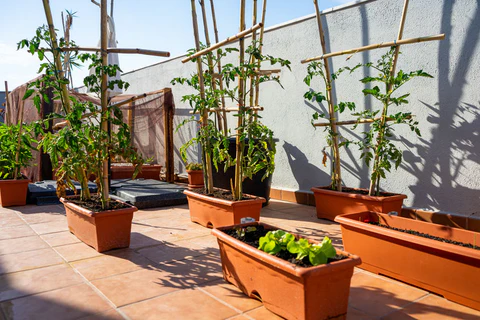
Chemical-free gardening is healthier and safer on rooftops.
Checklist:
- Compost: Make kitchen compost in a bin or tumbler for nutrient recycling.
- Organic Boosters: Use seaweed extract, fish emulsion, or neem cake powder for plant health.
- Pest Solutions:
- Neem oil spray for common pests
- Garlic-chili spray for aphids and mites
- Use companion planting (like marigolds) to deter harmful bugs
- Regular Monitoring: Check leaves, stems, and soil weekly for early pest or disease signs.
9. Create Comfort and Aesthetics
Your rooftop garden can also be a relaxing space to unwind.
Checklist:
- Seating Area: Use weather-resistant furniture like bamboo, metal, or rattan.
- Lighting: Install solar-powered garden lights for evening ambiance.
- Green Screens: Use climbers or vertical gardens as privacy screens.
- Decor Elements: Add sculptures, water fountains, stepping stones, or bird feeders.
10. Maintenance Tools and Safety Gear
Keep your gardening hassle-free with essential tools and safety practices.
Checklist:
- Gardening Tools: Hand trowel, pruners, watering can, gloves, spade.
- Storage Unit: Small shed, storage box, or shelf to organize tools.
- Safety Gear: Wear gloves, sun hat, and non-slip footwear while gardening.
- Regular Schedule: Create a maintenance calendar for watering, pruning, fertilizing, and harvesting.
11. Sustainability Practices
Make your garden eco-friendly by reducing waste and conserving resources.
Checklist:
- Composting: Convert all plant and kitchen waste into organic compost.
- Greywater Use: Reuse lightly used water from washing fruits or veggies.
- Native Plants: Use native varieties for better adaptability and less maintenance.
- Bee & Butterfly Garden: Grow pollinator-friendly plants to support local biodiversity.
12. Monitor Growth and Success
Track your garden’s progress to identify what works best and make timely improvements.
Checklist:
- Gardening Journal: Maintain records of planting dates, pest issues, harvests, and changes.
- Seasonal Rotation: Change crops every season to maintain soil fertility.
- Photo Logs: Take monthly photos to visually track plant growth.
- Feedback Loop: Adjust based on success rate—experiment with new crops or techniques.
Final Thoughts
Creating a rooftop garden is not just about growing plants—it’s about nurturing a space that gives back to you and the environment. Whether your goal is to grow organic vegetables, attract butterflies, or create a serene retreat above the city buzz, this ultimate rooftop gardening checklist provides the blueprint to do it successfully.
With the right planning, effort, and passion, your rooftop can bloom into a thriving oasis in the sky. So gather your tools, grab your gloves, and let the rooftop transformation begin!
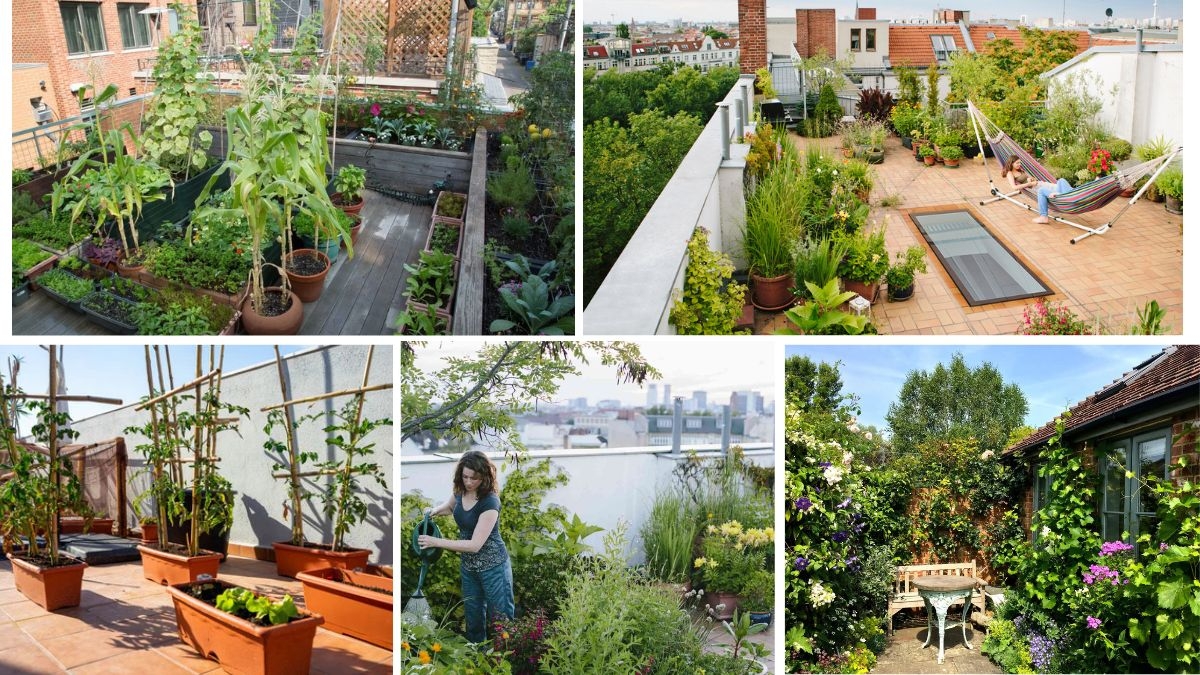





Leave A Comment